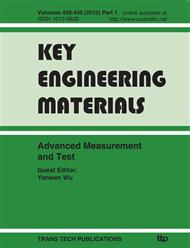p.1469
p.1475
p.1481
p.1487
p.1493
p.1499
p.1505
p.1511
p.1516
A Novel Binary Differential Evolution for Discrete Optimization
Abstract:
Differential evolution (DE) is an evolutionary algorithm that is based on the individual differential reconstruction idea. It is proposed by Stom and Price in 1997, and is very suitable to solve optimization problem over continuous spaces. First of all, with the introduction of concepts of differential operator (DO), etc., the concise description of DE is given and the analysis of its main features is advanced. For solving discrete optimization problem using DE, a new operator, mapping operator, in the new algorithm was used to ensure the original mutation operator still effective. Then a new S operator, with sigmoid function, was used to keep the result of the mutation operator falls in the interval [0, 1]. The algorithm not only has the advantages of DE, but also is very suitable to solve discrete optimization problems. Calculations of 0/1 knapsack problem show that algorithm has better convergence capability and stability.
Info:
Periodical:
Pages:
1493-1498
Citation:
Online since:
June 2010
Authors:
Price:
Сopyright:
© 2010 Trans Tech Publications Ltd. All Rights Reserved
Share:
Citation:


